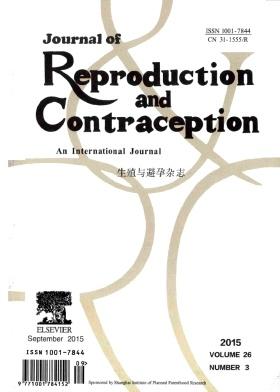Polymorphism of mitochondrial DNA genes involved in asthenozoospermia in infertile patients of Côte d’Ivoire
IF 0.7
4区 医学
Q4 OBSTETRICS & GYNECOLOGY
引用次数: 0
Abstract
Objective: The relationship between mitochondrial DNA (mtDNA) polymorphisms and abnormalities in sperm quality has been the subject of several studies, with the objective of improving the treatment of male infertility. This study, which contributes to the identification of genetic markers of sperm abnormalities, was conducted to study mtDNA mutations in the asthenozoospermia profile. Methods: This case-control study included 30 patients with asthenozoospermia and 28 with normospermia after spermogram and spermocytogram analyses. After the extraction of total DNA from the spermatozoa of 58 ejaculates from these individuals using the phenol-chloroform method, the amplification of genes of interest in mtDNA using specific primers was performed by conventional polymerase chain reaction, and sequencing was used to detect mutations. Results: Male patients with asthenozoospermia in the tertiary sector had significantly more mutant- than wild-type (P = 0.0005) MT-CO II genes. Similarly, for the same gene, males with asthenozoospermia and primary infertility had significantly more mutants than the wild-type (P = 0.001). Sequencing revealed 29 mutations that were observed only with asthenozoospermia, which could be the basis for low sperm mobility. Conclusion: This study identified several mutations in mtDNA genes that could be considered genetic markers of asthenozoospermia if confirmed in a deeper study.Côte科特迪瓦不孕症患者弱精子症的线粒体DNA基因多态性
目的:线粒体DNA(mtDNA)多态性与精子质量异常之间的关系一直是几项研究的主题,目的是改善男性不育的治疗。这项研究有助于鉴定精子异常的遗传标记,旨在研究弱精子症谱中的mtDNA突变。方法:本病例对照研究包括30例弱精子症患者和28例正常精子症患者。使用苯酚-氯仿法从这些个体的58个精液的精子中提取总DNA后,使用特异性引物通过常规聚合酶链式反应扩增mtDNA中感兴趣的基因,并使用测序来检测突变。结果:第三部门男性弱精子症患者的突变型MT-CO-II基因明显多于野生型(P=0.0005)。同样,对于同一基因,患有弱精子症和原发性不孕的男性比野生型有更多的突变(P=0.001)。测序显示,只有弱精子症才观察到29个突变,这可能是精子流动性低的原因。结论:本研究确定了mtDNA基因的几个突变,如果在更深入的研究中得到证实,这些突变可以被认为是弱精子症的遗传标志。
本文章由计算机程序翻译,如有差异,请以英文原文为准。
求助全文
约1分钟内获得全文
求助全文
来源期刊

Reproductive and Developmental Medicine
OBSTETRICS & GYNECOLOGY-
CiteScore
1.60
自引率
12.50%
发文量
384
审稿时长
23 weeks
 求助内容:
求助内容: 应助结果提醒方式:
应助结果提醒方式:


